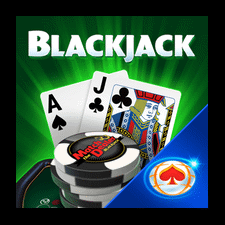Unlock the secrets of craps strategy: How speed of play and house edge impact your chances and average losses.
When analyzing casino games, the house edge is a crucial factor, and in craps, it’s even more important due to the speed of play. House edge isn’t the only thing that determines your overall chances of winning. The pace at which decisions are made directly influences your average losses and your shot at coming out ahead.
Some bets in craps are resolved in a single roll, while others take multiple rolls to decide. Multi-roll bets include the pass and come bets, don’t pass and don’t come, place bets on 4, 5, 6, 8, 9, or 10, and hard-way wagers. Each of these requires multiple rolls to settle.
Speed and Average Losses in Craps: An Example
Consider a scenario where you’re at a table for 100 rolls. If you bet on any 7, with its 16.67% house edge, that disadvantage works against you on every roll. In those 100 rolls, there are 100 decisions to make.
On the other hand, place bets on 6 or 8 take an average of 3.27 rolls to be resolved. So, in 100 rolls, you would have roughly 30.6 decisions on those bets.
If you’re betting $6 per place bet to capitalize on the 7-6 payoff on winning 6 or 8 bets, you’d put an average of $183.60 at risk on the 6 or 8 over 100 rolls. Meanwhile, betting on any 7 would risk $100, with just one decision for each of those rolls.
Rolls Per Decision: How Long Do Bets Take?
Each multi-roll bet has an average number of rolls it takes to decide, and that directly affects how often you’ll make a decision in 100 rolls.
Bet Type | Average Rolls/Decision | Average Decisions/100 Rolls |
Pass or Come | 3.38 | 29.6 |
Don’t Pass or Don’t Come | 3.47 | 28.7 |
Place 6 or 8 | 3.27 | 30.6 |
Place 5 or 9 | 3.60 | 27.8 |
Place 4 or 10 | 4 | 25 |
Hard 6 or 8 | 3.27 | 30.6 |
Hard 4 or 10 | 4 | 25 |
For single-roll bets (like the Field, Any 7, Any Craps, etc.), there’s one decision per roll, so you have 100 decisions in 100 rolls.
House Edges: Comparing Per-Decision and Per-Roll
The house edge per decision is another important metric. Most multi-roll bets have lower house edges than one-roll bets, but when you look at it per roll, the edge can be much smaller for multi-roll bets.
For example, the pass bet has a 1.41% house edge per decision, but it’s spread over 3.38 rolls, so the house edge per roll is just 0.42%. In contrast, a one-roll bet like any 7 has a much higher edge—16.67% per decision and per roll.
Here’s how house edges break down for common craps wagers:
Bet | House Edge Per Decision | House Edge Per Roll |
Pass or Come | 1.41% | 0.42% |
Don’t Pass or Don’t Come | 1.4% | 0.40% |
Place 6 or 8 | 1.52% | 0.46% |
Place 5 or 9 | 4% | 1.11% |
Place 4 or 10 | 6.67% | 1.67% |
Hard 6 or 8 | 9.09% | 2.78% |
Hard 4 or 10 | 11.11% | 2.78% |
2, 12, or hard hop bets | 13.89% | 13.89% |
3, 11, or easy hop bets | 11.11% | 11.11% |
Any Craps | 11.11% | 11.11% |
Any 7 | 16.67% | 16.67% |
Field (2 and 12 pays 3-1, 2 pays 2-1) | 2.78% | 2.78% |
Understanding the Financial Impact: Multi-Roll vs. Single-Roll Bets
Speed directly impacts your average losses and the chances you have to win. Let’s look at some of the bets with similar house edges per roll, but very different risks over time.
Consider the hard 4 or hard 10. These bets carry an 11.11% house edge per decision, which is the same as the edge for the Any Craps bet. However, the way these bets are settled is quite different. Hard 4 wins if the shooter rolls a pair of 2s, but you lose if the roll is a 7 or a “hard” 4. Meanwhile, with Any Craps, you win on a 2, 3, or 12 and lose on every other roll.
While both bets have an 11.11% edge per decision, the speed of play makes a big difference. To keep $1 in play for 100 rolls on a hard 4 or 10 bet, you’ll need an average of $25. In contrast, for an Any Craps bet, you need $100. This means that, even though both bets have the same house edge, your losses accumulate much faster on the Any Craps bet because the decision is made instantly on every roll.
Speed of Play and the Field Bet: A Closer Look
Let’s take the Field bet as an example, which is one of the most favorable one-roll bets. You win if the roll is 2, 3, 4, 9, 10, 11, or 12. The payout on 2 or 12 can range from 2-1 to 3-1, depending on the casino.
With a 3-1 payout for the 12, the Field bet carries a house edge of 2.78%. Over 100 rolls, that’s $100 at risk for a $1 bet, with an average loss of $2.78. In comparison, place bets on the 10, which have a 4% house edge, have a loss of only $1 per 100 rolls.
The speed of the Field bet means that your money is at risk for every roll, making your losses accumulate faster, even though the house edge per decision is lower compared to place bets.
Conclusion: Speed vs. House Edge in Craps
Ultimately, while house edge is a critical factor when considering any craps bet, the speed at which the bet is resolved has a major impact on your overall risk and potential losses. One-roll bets settle quickly but compound your losses faster, while multi-roll bets, while having lower house edges, take longer to resolve, giving you more time to make decisions and reduce your exposure. Understanding both the house edge and speed of play is key to making informed decisions at the craps table.













